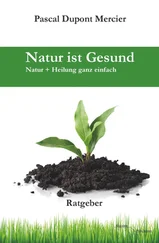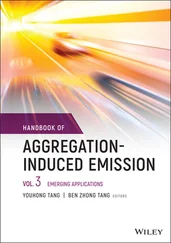13 Chapter 14TABLE 14.1 Comparison of the Composition of Rosé and Red WinesTABLE 14.2 Example of Hydroxycinnamic Acid, Anthocyanin and Tannin Concentrations...TABLE 14.3 Comparison of Different Rosé Wines Made from the Same Grapes (Sudraud ...TABLE 14.4 Effect of Pressing Temperature (Cryoextraction) on the Volume and Pote...TABLE 14.5 Improvement of Sauternes Must Quality in 1985 by Using Cryoextraction ...TABLE 14.6 Physicochemical Characteristics of Champagne Must (Valade and Blanck, ...TABLE 14.7 Sugar Content of the Tirage Liqueur According to the Pressure Required...TABLE 14.8 Comparison of Wine Composition Before and After Second Fermentation (1...TABLE 14.9 Average Amino Acid Content of Base Wines Made from Different Champagne...TABLE 14.10 Analytical Characteristics of French Fortified Wines (VDN) (Brugirard...
1 Chapter 1 FIGURE 1.1 A yeast cell (Gaillardin and Heslot, 1987). FIGURE 1.2 The four types of glucosylation of cell wall yeast mannoproteins ... FIGURE 1.3 Scanning electron microscope photograph of proliferating S. cerev ... FIGURE 1.4 Cellular organization of the cell wall of S. cerevisiae . FIGURE 1.5 Yeast membrane phospholipids. FIGURE 1.6 Diagram of a membrane lipid bilayer. The integral proteins (a) ar... FIGURE 1.7 Principal yeast membrane sterols. FIGURE 1.8 Molecular models representing the three‐dimensional structure of ... FIGURE 1.9 Evolution of glucose transport system activity of S. cerevisiae f... FIGURE 1.10 The yeast nucleus (Williamson, 1991). FIGURE 1.11 Saccharomyces cerevisiae cell cycle (vegetative reproduction) (T... FIGURE 1.12 Scanning electron microscope photograph of S. cerevisiae cells k... FIGURE 1.13 Meiosis in S. cerevisiae (Tuite and Oliver, 1991). (a) Cell befo... FIGURE 1.14 Reproduction cycle of a heterothallic yeast strain. a, α : s... FIGURE 1.15 Mating type interconversion model of haploid yeast cells in a ho... FIGURE 1.16 Genome renewal of a homozygote yeast strain for the HO gene of h... FIGURE 1.17 Identification of the K2 killer phenotype in S. cerevisiae . The ... FIGURE 1.18 Yeast growth and survival curves in a grape juice medium contain... FIGURE 1.19 Observation of two winemaking yeast species having an apiculate ... FIGURE 1.20 Binary fission of S. pombe . FIGURE 1.21 Principle of the polymerization chain reaction (PCR). FIGURE 1.22 Mode of action of DNA polymerase. FIGURE 1.23 Recognition site and cutting mode of an Eco R1 restriction endonu... FIGURE 1.24 Identification principles for the S. cerevisiae and S. uvarum sp... FIGURE 1.25 Electrophoresis in agarose gel (1.8%) of (a) Eco R1 and (b) Pst 1 ... FIGURE 1.26 Restriction profile by Eco R5 of mtDNA of different strains of S. ... FIGURE 1.27 CHEF pulsed‐field electrophoresis device ( contour clamped electr ... FIGURE 1.28 Mechanism of DNA molecule separation by pulsed‐field electrophor... FIGURE 1.29 Example of electrophoretic (pulsed field) profile of S. cerevisi ... FIGURE 1.30 Principle of identification of S. cerevisiae strains by PCR asso... FIGURE 1.31 Electrophoresis in agarose gel (at 1.8%) of amplified fragments ... FIGURE 1.32 Electrophoresis in agarose gel (1.8%) of amplified fragments ill... FIGURE 1.33 Determination of the detection threshold of a contaminating stra... FIGURE 1.34 Grape surface under scanning electron microscope, with detail of... FIGURE 1.35 Comparison of yeast species present at the start of alcoholic fe... FIGURE 1.36 Dynamics of total yeasts and non‐ Saccharomyces yeasts during red... FIGURE 1.37 Breakdown of S. cerevisiae karyotypes during alcoholic fermentat... FIGURE 1.38 Breakdown of S. cerevisiae karyotypes in tank I of red grapes fr... FIGURE 1.39 Breakdown of karyotypes for 10 strains analyzed in tank I and ta... FIGURE 1.40 Breakdown of karyotypes of 10 strains analyzed in tanks I, II, a...
2 Chapter 2 FIGURE 2.1 Structure of adenosine triphosphate (ATP). FIGURE 2.2 Glycolysis and alcoholic fermentation pathway. FIGURE 2.3 (a) Structure of nicotinamide adenine dinucleotide in the oxidize... FIGURE 2.4 Structure of thiamine pyrophosphate (TPP). FIGURE 2.5 Glyceropyruvic fermentation pathway. FIGURE 2.6 Structure of coenzyme A. The reaction site is the terminal thiol ... FIGURE 2.7 Tricarboxylic acid or Krebs cycle. 1, citrate synthase; 2–3, acon... FIGURE 2.8 Structure of flavin adenine dinucleotide (FAD): (a) oxidized form... FIGURE 2.9 Oxidative phosphorylation during electron transport in the respir... FIGURE 2.10 Effect of thiamine addition on pyruvic acid production during al... FIGURE 2.11 Acetic acid formation pathways in yeasts. 1, pyruvate decarboxyl... FIGURE 2.12 Acetate production by strains of S. cerevisiae (V5) following de... FIGURE 2.13 Correlation between volatile acidity production and the maximum ... FIGURE 2.14 Effect of the yeast‐assimilable nitrogen content in must (with o... FIGURE 2.15 Effect of an alcohol‐induced precipitate of a botrytized grape m... FIGURE 2.16 Effect of the lipid fraction of grape solids on acetic acid prod... FIGURE 2.17 Acetoin, diacetyl, and 2,3‐butanediol formation by yeasts under ... FIGURE 2.18 Citramalic acid and dimethylglyceric acid. FIGURE 2.19 Decomposition of malic acid by yeasts during alcoholic fermentat... FIGURE 2.20 Incorporation of the ammonium ion in α ‐ketoglutarate cataly... FIGURE 2.21 Amidation of glutamate into glutamine by glutamine synthetase (G... FIGURE 2.22 Pyridoxal phosphate (PLP) and pyridoxamine phosphate (PMP). FIGURE 2.23 General biosynthesis pathways of amino acids. FIGURE 2.24 Active amino acid transfer mechanisms in the yeast plasma membra... FIGURE 2.25 Oxidative deamination of an amino acid, catalyzed by a transamin... FIGURE 2.26 Mode of action of pyridoxal phosphate (PLP) in transamination re... FIGURE 2.27 Deamination of serine by a dehydratase. FIGURE 2.28 Formation of higher alcohols from amino acids (Ehrlich reactions...
3 Chapter 3 FIGURE 3.1 Example of daily fermentation monitoring in two tanks (initial mu... FIGURE 3.2 Yeast growth cycle and fermentation kinetics of grape must contai... FIGURE 3.3 Yeast growth factors. FIGURE 3.4 Structure of some steroids and fatty acids playing a role in yeas... FIGURE 3.5 Influence of sterols on yeast survival during the death phase at ... FIGURE 3.6 Evolution of S. cerevisiae population in fermenting media contain...FIGURE 3.7 Influence of temperature on fermentation speed and limit ( S 0= in...FIGURE 3.8 Effect of different microbial phenomena during primary and second...
4 Chapter 4FIGURE 4.1 Lactic acid bacteria isolated in wine under a scanning electron m...FIGURE 4.2 Polysaccharide chain of bacterium peptidoglycan.FIGURE 4.3 Structure diagram of the peptidoglycan of O. oeni bacteria.FIGURE 4.4 Chemical formulae of some membrane phospholipids.FIGURE 4.5 Formula of a glycolipid.FIGURE 4.6 Biochemical substrate assimilation profiles (API 50 CHL gallery) ...FIGURE 4.7 Schematic diagram of the general principle for the identification...FIGURE 4.8 Specific lactic acid bacteria population counts by hybridization ...
5 Chapter 5FIGURE 5.1 Metabolic pathway of glucose fermentation by homolactic bacteria....FIGURE 5.2 Metabolic pathway of glucose fermentation by heterolactic bacteri...FIGURE 5.3 Pentose fermentation pathway by lactic acid bacteria.FIGURE 5.4 Equation of the malolactic reaction.FIGURE 5.5 Metabolic pathway for citric acid degradation by lactic acid bact...FIGURE 5.6 Tartaric acid metabolism by lactic acid bacteria (Radler and Yann...FIGURE 5.7 Glycerol degradation pathways by lactic acid bacteria.FIGURE 5.8 Histidine decarboxylation reaction.FIGURE 5.9 Arginine degradation mechanism by O. oeni .
Читать дальше












